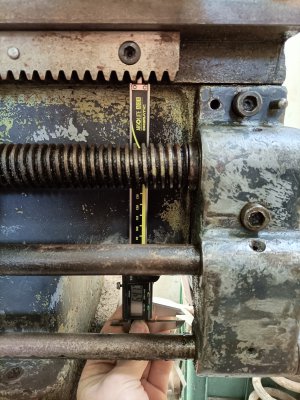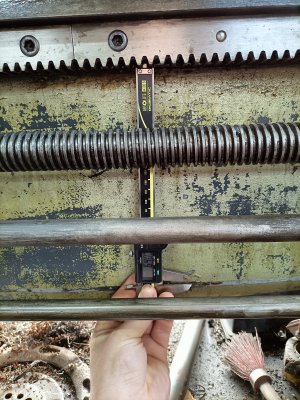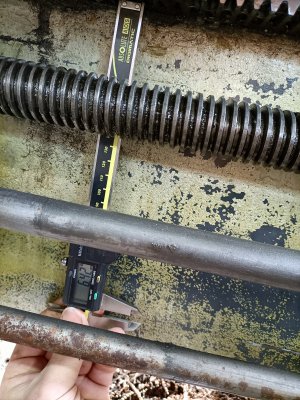The saddle is lower then new. If you make new hold downs and leave the saddle low, the feed shaft and screw will bind up on the ends. The saddle has to be raised up to the original height by putting a wear strip on the saddle ways. Gentlemen, I am not guessing at a solution, I have done this many times before. Those oil grooves being worn off should show you the saddle is worn. You can check the back way by mic'ing it, say every 12" . The back side is is square and will not be as worn as the front V's. An easy way to test the wear in the saddle ways, is to dismantle the Tail-Stock, stone the TS ways a, set the lower 1/2 of the TS on the TS ways near the chuck and put a mag base on the bottom slide and indicator resting on the inside V and slide the TS base down the TS ways. You can repeat that test on all the saddle ways. The test will show wear in the middle and the ends should be the same. The one photo doesn't show the rack. If the rack doesn't have noticeable wear then you can use the rack and rack pinion to get the correct clearance or what the shim should be.




